
Present Perfect Continuous Infographic Present perfect, English grammar, English grammar rules
The present perfect continuous is used to refer to an unspecified time between 'before now' and 'now'. The speaker is thinking about something that started but perhaps did not finish in that period of time. He/she is interested in the process as well as the result, and this process may still be going on, or may have just finished.

Present Perfect Continuous Tense Definition, Rules and Useful Examples • 7ESL Learn english
The present perfect continuous (also known as the present perfect progressive) is a verb tense used to talk about something that started in the past and is continuing at the present time. I have been reading War and Peace for a month now. In this sentence, using the present perfect continuous conveys that reading War and Peace is an activity.
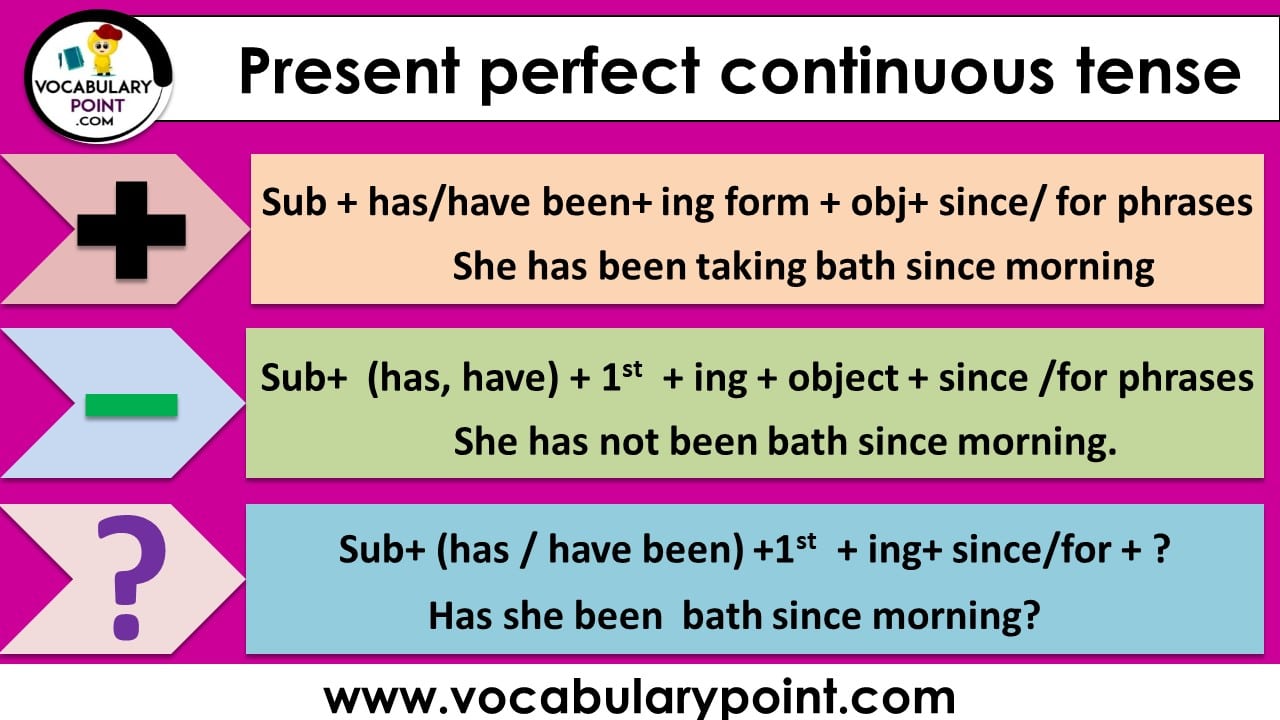
Present Perfect Continuous Tense Examples & Formation Vocabulary Point
What Is Present Perfect Continuous? The present perfect continuous tense is a verb tense. Used to display that an action kick started back in the time and continues into the present moment of time, the tense relates to a timeframe. The present perfect continuous mostly puts emphasis on the duration or the period that an act / action has been.

Keywords Present Perfect Continuous The Present Perfect Continuous worksheet Free ESL
Grammar B1-B2: Present perfect simple and present perfect continuous: 1. Read the explanation to learn more. Grammar explanation. We use both the present perfect simple (have or has + past participle) and the present perfect continuous (have or has + been + -ing form) to talk about past actions or states which are still connected to the present.
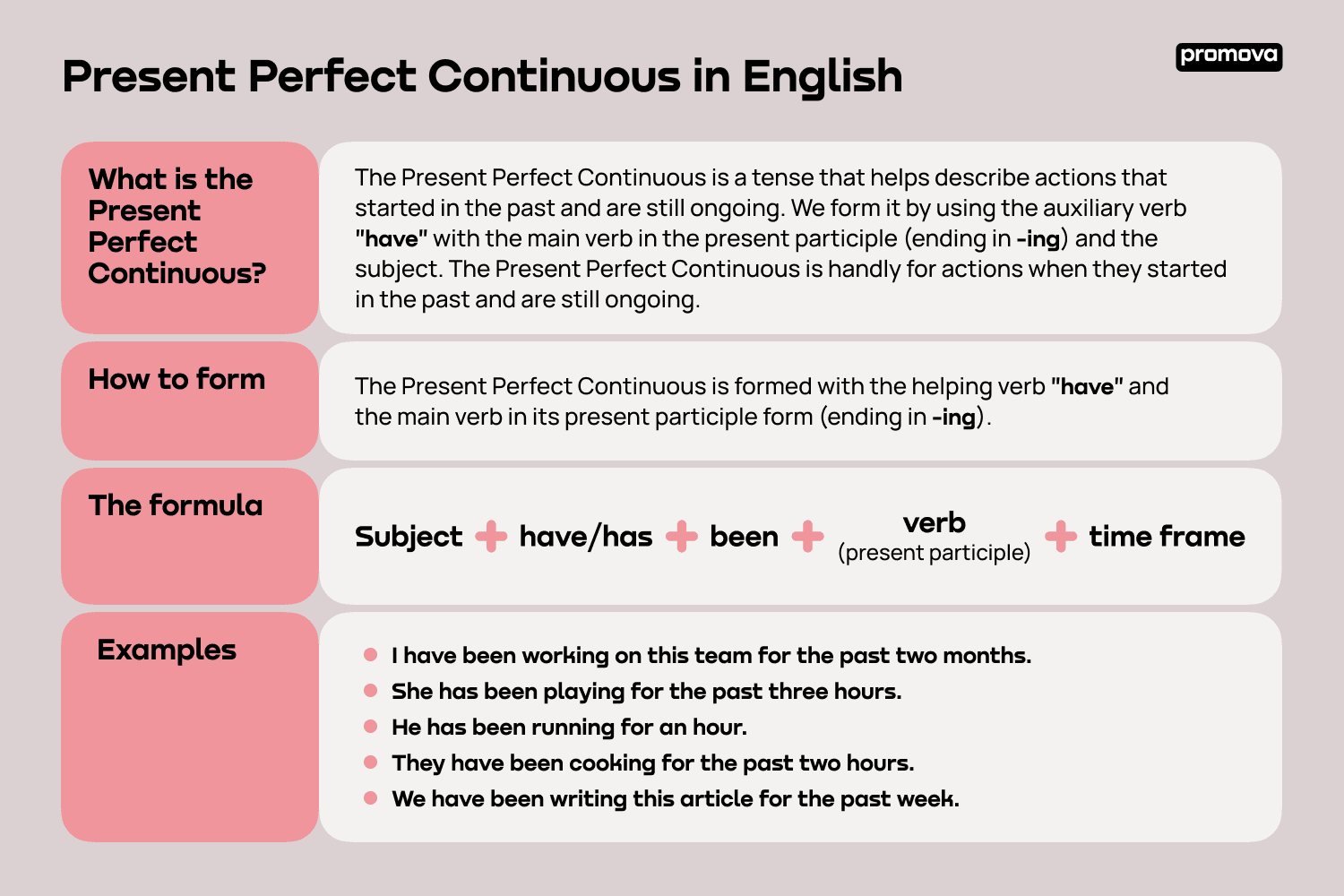
Present Perfect Continuous Promova Grammar
We use the present perfect to connect the past and the present. The cafe has just opened. (= It is open now.) People have been arriving in large numbers. (= They are still arriving now.) We can often use either the present perfect simple or the present perfect continuous with since or for when something started in the past and continues now, or.

20 Examples of Present Perfect Continuous Tense Sentences
Present perfect simple or present perfect continuous? - English Grammar Today - a reference to written and spoken English grammar and usage - Cambridge Dictionary

PRESENT PERFECT CONTINUOUS IN A NUTSHELL ) IngliszTiczer.pl
The present perfect continuous tense uses two helping verbs and a main verb in the present participle form. The helping verbs used are 'have' or 'has' along with 'been'. These verbs are followed by the present participle of the main verb, which is formed by adding an 'ing' to the base verb.

How to use the Present Perfect Continuous English grammar, Learn english grammar, Learn
The present perfect progressive, also present perfect continuous, is the tense used for actions that began in the past and last until a present or almost present moment. The timing of this action is not specified, instead, the result or process of the action is emphasised. The present perfect progressive is conjugated with the present tense of.
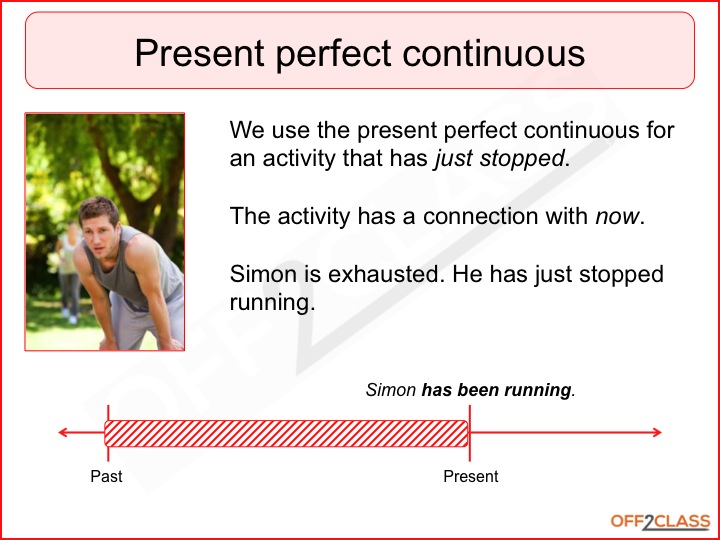
Present Perfect Continuous Lesson Plans! Off2Class
CONTENT. The present perfect continuous tense, also known as the present perfect progressive, is generally used to put an emphasis on the procces or result of an action in the recent past without specifying the time. Signal words for the present perfect continuous tense include lately, all day, the whole week, since 1995, for 3 years, etc.

present perfect continuous tense Archives English Grammar Here
The present perfect continuous is formed with have/has been and the -ing form of the verb. We normally use the present perfect continuous to emphasise that something is still continuing in the present: She has been living in Liverpool all her life. It's been raining for hours. I'm tired out.

Present Perfect Continuous Tense Rules & Examples GrammarVocab
The Present Perfect Continuous uses two auxiliary verbs together with a main verb. In this lesson we look at the structure and use of the Present Perfect Continuous tense, as well as the use of for and since, followed by a quiz to check your understanding. Note that continuous tenses are also called progressive tenses.

Present Perfect Continuous Tense Definition, Rules and Useful Examples • 7ESL
The present perfect continuous tense is generally used to describe actions or conditions that began in the past but are still going on or have recently stopped. In particular, there are several situations in which we must use the present perfect continuous tense to communicate specific meanings: Situation. Example.

Present Perfect Continuous Tense English Grammar
Also called the present perfect progressive. Read about how to make the present perfect continuous tense here. Download this explanation in PDF here. 1: To say how long for unfinished actions which started in the past and continue to the present. We often use this with 'for' and 'since' (see the the present perfect simple page for more about.

Present Perfect Continuous Tense Grammar
Present perfect continuous vs. present perfect. The present perfect and present perfect continuous can often be used interchangeably with little difference in meaning (e.g., "I have worked here for a long time" or "I have been working here for a long time").. But there are situations where one is more appropriate than the other: The present perfect continuous must refer to an action.
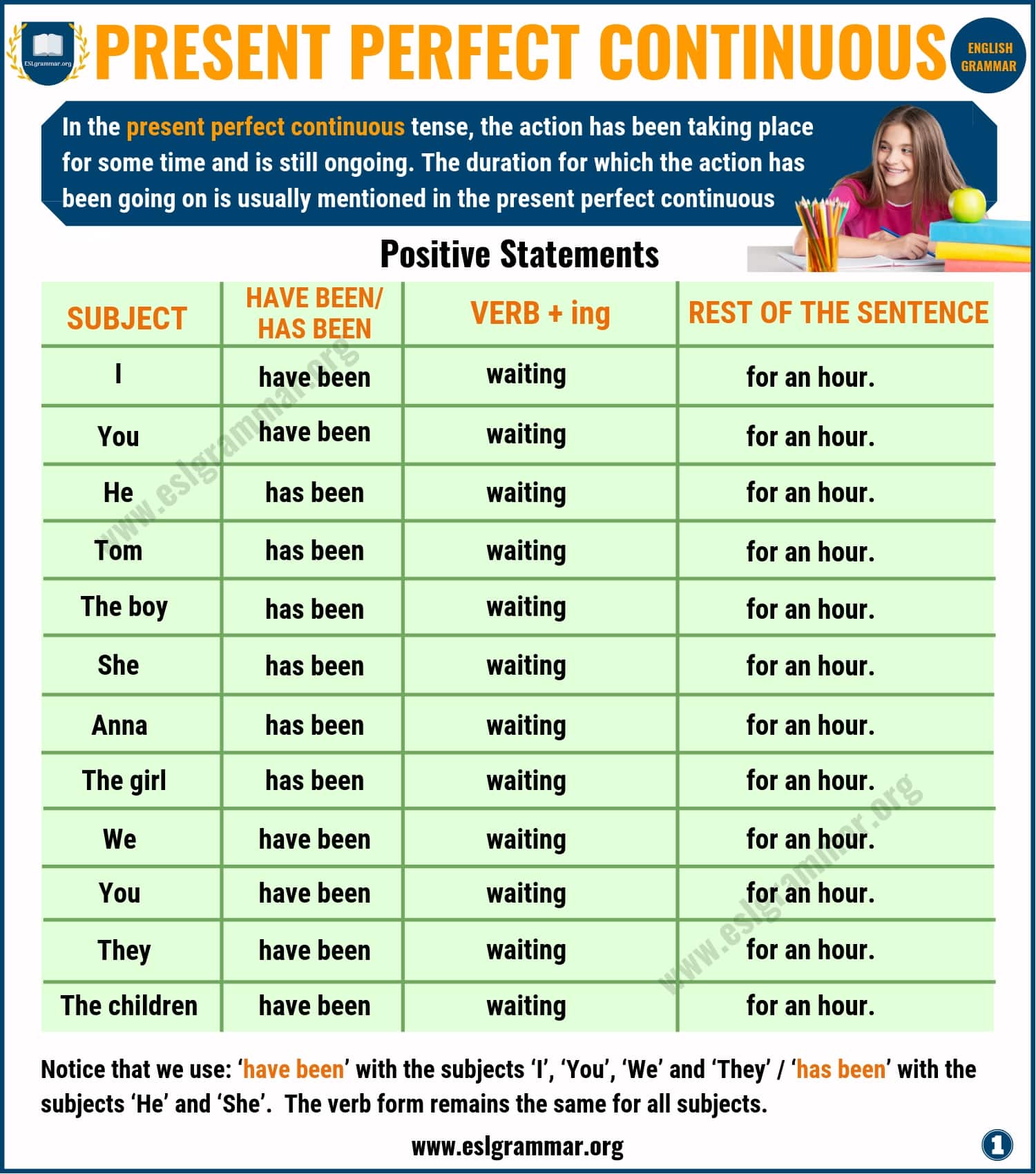
Present Perfect Continuous Tense Definition, Useful Examples & Excercise ESL Grammar
1: The present perfect continuous can be used to emphasise the length of time that has passed. The present perfect simple is generally neutral: They've been waiting for hours! (This emphasises the length of time). They've waited for hours. (This doesn't emphasise the length of time). 2: On the other hand, the present perfect simple is often.
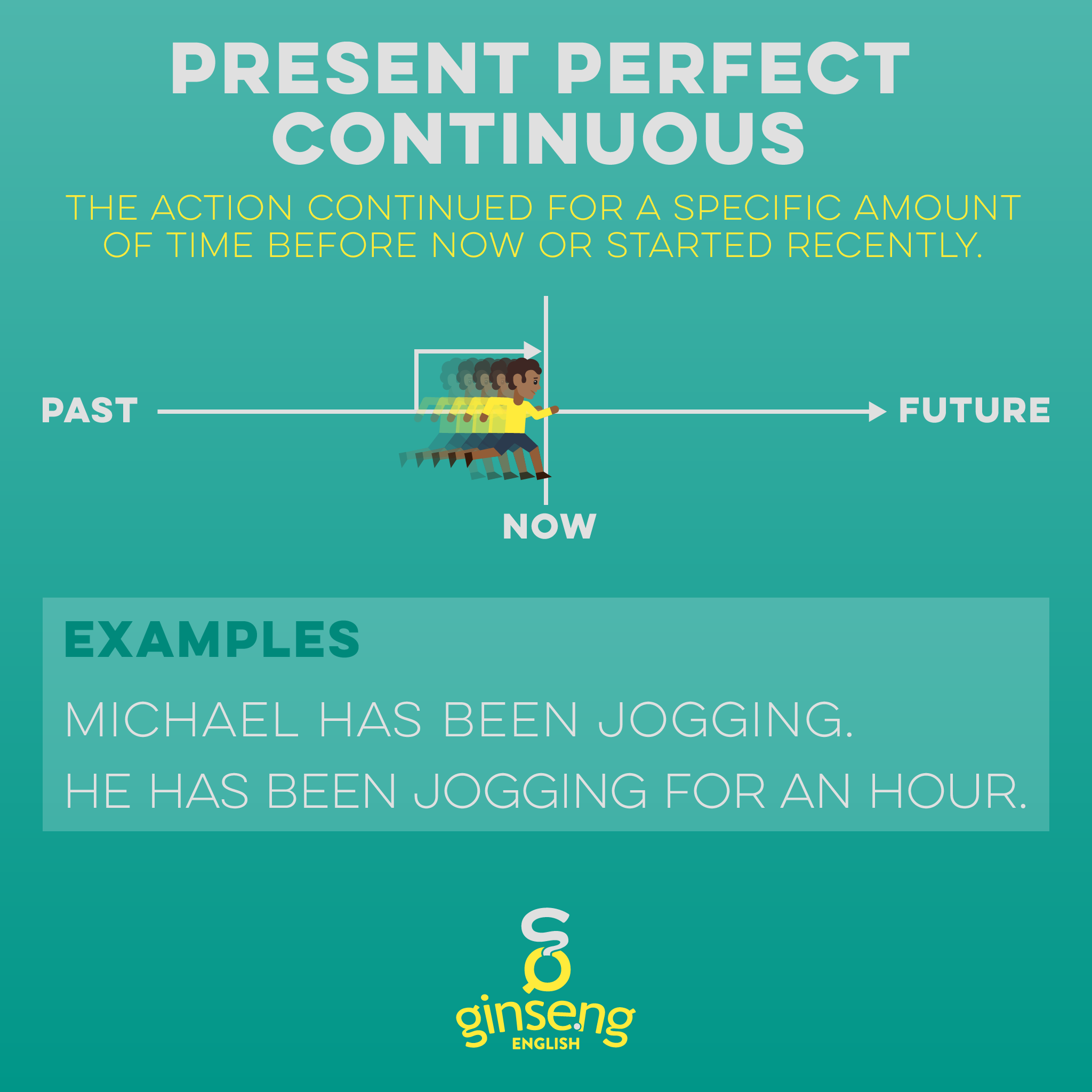
Present Perfect Continuous Tense Ginseng English Learn English
She hasn't been working here for very long. 'Why is your hair wet? Have you been swimming in the lake?'. We form the present perfect continuous with: Subject + have + been + -ing form. Positive and negative. Subject. have. been.